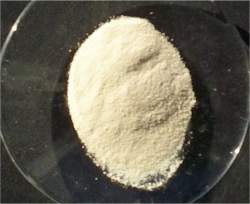A US study has found scant media coverage of the potential risks posed by nanotechnology, with many more articles extolling its future benefits.
In their longitudinal study spanning coverage from 2000 to 2009 - in 20 US, nine UK newspapers and two wire services - the US researchers looked for articles that could alert readers to nanotechnology's risks.
Sharon Friedman and Brenda Egolf, from Lehigh University in Bethlehem, found the number of stories that mentioned risks averaged around just 37 per year in each country. Three main narratives prevailed - runaway technology, science-based studies and regulation - and journalists most often covered health risks, followed by environmental and societal risk issues. Regulation coverage was less frequent but increased over time.
The report concludes that given the many articles describing nanotechnology's benefits and the average person's minimal knowledge about the topic, we may be setting the stage for public distrust of nanotechnology in the event that a dangerous event should occur.
Friedman told Chemistry World that there has been a great deal of 'cheerleading' by the US and UK governments, universities, companies and scientists about nanotechnology: 'The number of news releases with "good news" about nanotechnology has been overwhelming,' she says. 'Almost every study in the US and most European countries has found that the dominant narrative or frame for nanotechnology media articles has been positive.'
Looking on the bright side
Positive coverage has focused on the health, energy and computer technology benefits of nanotechnology. Friedman says that this is what editors believe readers like to read. 'With very few risk incidents occurring, and many scientists providing either balanced or very positive information about nanotechnology, reporters have had little incentive to follow up on scientific risk messages,' she explains.
Friedman suggests other reasons for simple, positive stories predominating include cutbacks at mainstream US newspapers. 'After the departure of most science writers from [a newspaper's] staff, it is much easier to write an article based on a news release from an organisation about its nanotechnology accomplishments or concerns than to follow up on any of these topics for a "bigger picture" article,' she says.
Robin Williams, director of the Institute for the Study of Science, Technology and Innovation at the University of Edinburgh, UK, says that there is no proof that a greater discussion of the assumed risks in the media today will lead to nanotechnology being better accepted and understood in future. Efforts to outline nanotechnology's potential risks or benefits ahead of time are beset by pitfalls and will not necessarily avert public controversy, he argues.
Attempts have been made to anticipate the outcome by extrapolating from previous technologies - such as the recent debate over genetically modified foods. 'However studies of historical experiences show that the initial conceptions of the implications of a technology are often so far removed from ultimate outcomes as to be uninformative,' he explains. 'Innovation pathways often deviate from their initially expected trajectory.
'There is little evidence that public involvement, and in particular upstream involvement in science and technology, will lead to smoother, more socially beneficial and acceptable technology development,' he concludes.
Helen Carmichael


